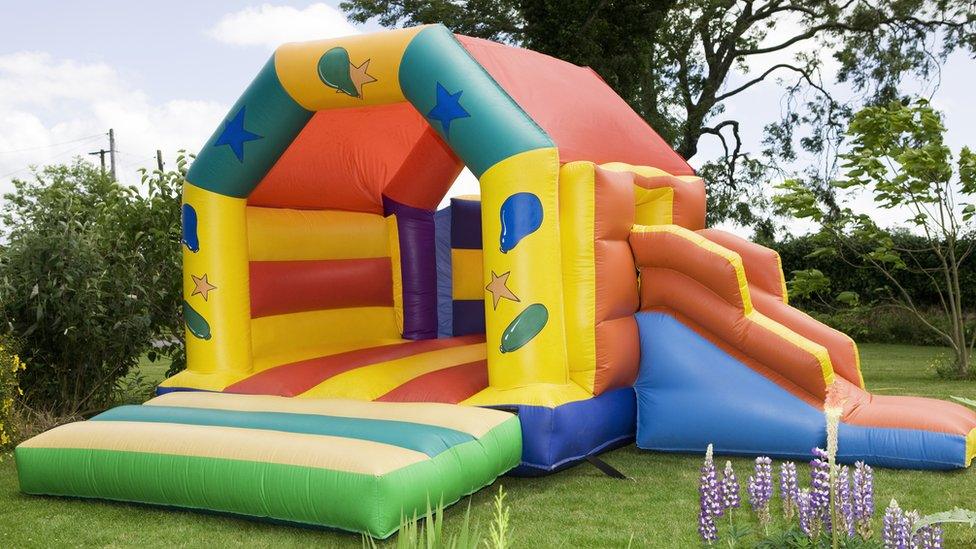Bouncy castles: What are the rules on safety?
- Published

After the death of three-year-old Ava-May Littleboy in Norfolk, Conservative MP Robert Halfon has called for bouncy castles to be temporarily banned in public areas. The latest fatal accident follows the death of seven-year-old Summer Grant in 2016 when a bouncy castle broke free from its moorings in Harlow, Essex.
So what are the current rules around the safe use of bouncy castles and other inflatable play equipment?
According to health and safety law, external, all bouncy castle equipment used "as a slide or for bouncing upon" by members of the public needs to be regularly tested by a "competent" person.
The inspection needs to be carried out before the bouncy castle is first used. After that, it's every year.
The Health and Safety Executive (HSE) says anyone looking to hire a bouncy castle should ask to see proof that it has had its annual test.
And hiring a bouncy castle that does not conform to British standards means "you are taking a risk with the safety of those using it".
There are two main organisations involved in testing bouncy castles, the RPII, external (Register of Play Inspectors International) and the PIPA, external (Pertexa Inflatable Play Accreditation).
The RPII accredits the inspectors and provides the training
The PIPA oversees the inspection scheme and provides the UK's database of tested bouncy castles
Tagged number
Every bouncy castle supplied by a reputable manufacturer - for private hire or public use - should come with a unique "tagged" number showing it has been designed to meet a recognised standard.
That number is then logged in the PIPA database, external, where the results of its initial test and subsequent annual tests are recorded.
The type of checks an inspector will carry out include:
wear or rips in the fabric
the internal air pressure
the number and condition of the anchors
the firmness of any walls and towers
condition of the blower and whether it has sufficient mesh guards
In addition to the safety checks, the HSE says, bouncy castles must come with operating instructions, external.
These will contain information on the number of people allowed on the bouncy castle at any one time, as well as any height limits.
When it comes to the weather, the HSE says that 38km/h (24mph) is the recommended maximum wind speed to use a bouncy castle.
This is the speed at which small trees begin to sway.
However, most injuries are a result of misuse - for example, people attempting somersaults or climbing the walls.
And, according to the HSE, "accidents involving broken limbs and necks are not uncommon".


